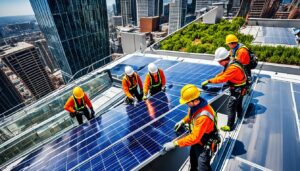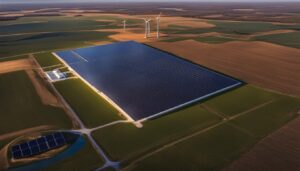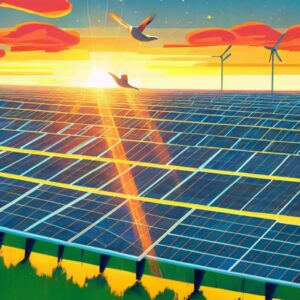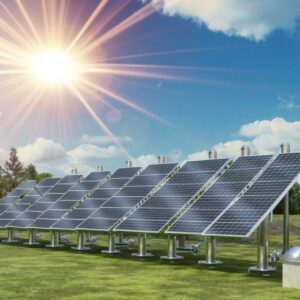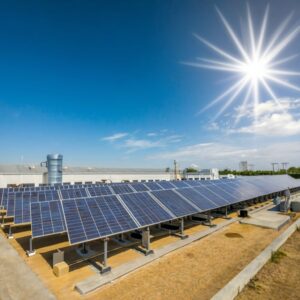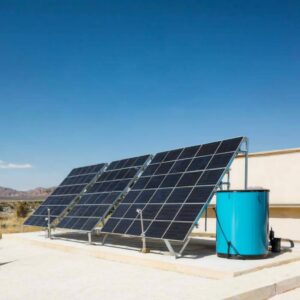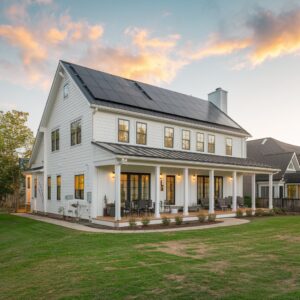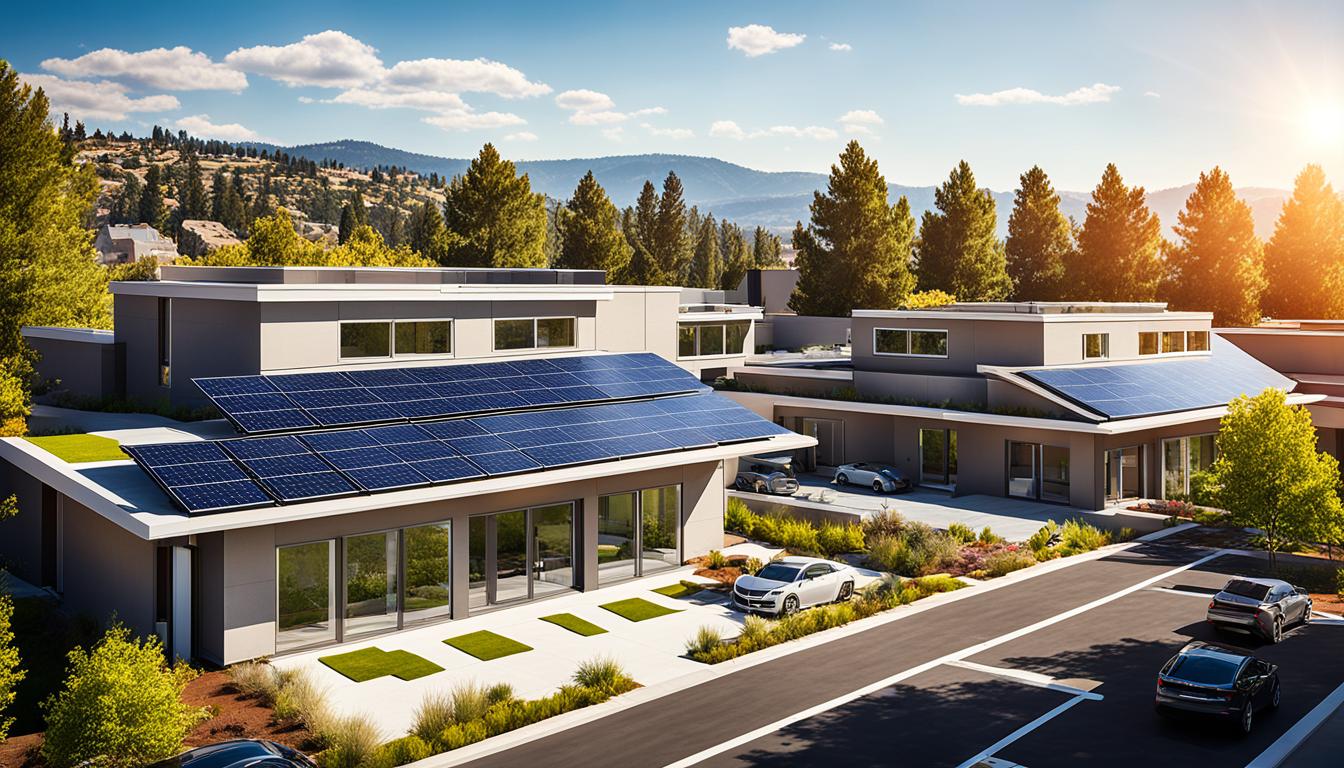
PV systems, also known as photovoltaic systems, have revolutionized the way we generate electricity. These systems utilize sunlight to produce clean and renewable energy, making them an increasingly popular choice for both residential and commercial applications. From small-scale installations on residential rooftops to massive solar power plants, the application of PV systems has the potential to transform energy production and contribute to a sustainable future.
Key Takeaways:
- PV systems harness the power of sunlight to generate clean and renewable energy
- They can be applied on residential rooftops and in utility-scale solar power plants
- Residential rooftop PV systems enable homeowners to generate electricity for their household needs
- Solar power plants generate large amounts of clean energy to supply to the electrical grid
- PV systems contribute to a sustainable future by reducing reliance on fossil fuels
Residential Rooftop PV Systems: Harnessing Solar Power at Home
One of the most common applications of PV systems is on residential rooftops. Homeowners can install solar panels on their roofs to harness the power of the sun and generate electricity for their household needs.
These systems typically consist of photovoltaic modules, an inverter, and a battery storage system. The solar panels convert sunlight into electricity, which is then used to power the home’s appliances and lighting. By utilizing residential rooftop PV systems, homeowners can significantly reduce their dependence on traditional energy sources and lower their energy consumption.
Net metering is another benefit of residential rooftop PV systems. This practice allows homeowners to sell excess electricity back to the grid, effectively spinning their electricity meter backward. As a result, homeowners can earn credits or even receive compensation for the electricity they generate, further maximizing the cost savings and environmental benefits.
“Installing a residential rooftop PV system is not only a smart financial decision but also a sustainable choice for homeowners. It provides a renewable and clean energy solution that reduces carbon emissions and contributes to a greener future,” says John Anderson, a renewable energy expert.
With the advancement of technology and the decreasing cost of solar panels, residential rooftop PV systems are becoming more accessible and affordable for homeowners. The efficiency and reliability of these systems have improved over the years, making them a viable long-term investment.
Solar Panels: A Cost-Effective Investment
Solar panels are at the heart of residential rooftop PV systems. These panels are made up of photovoltaic cells that convert sunlight into direct current (DC) electricity. The DC electricity is then converted into alternating current (AC) through an inverter, making it compatible with the home’s electrical system.
There are two primary types of solar panels used in residential rooftop PV systems:
- Monocrystalline solar panels: Made from a single crystal structure, these panels offer higher efficiency and a sleeker appearance. However, they tend to be more expensive.
- Polycrystalline solar panels: Composed of multiple silicon crystals, these panels provide a cost-effective option with slightly lower efficiency. They have a blue-hue appearance.
Choosing the right type of solar panel depends on various factors, including budget, available space, and energy requirements. Consulting with a solar energy professional can help homeowners make an informed decision.
Maximizing Energy Efficiency with Battery Storage
Battery storage systems complement residential rooftop PV systems by storing excess electricity generated during the day. These batteries can then be used to power the home during periods of low sunlight or at night.
The use of battery storage systems not only ensures uninterrupted power supply but also maximizes energy efficiency. By storing excess electricity, homeowners can further reduce their reliance on the electrical grid and optimize their energy consumption.
Achieving a Sustainable Future with Residential Rooftop PV Systems
Residential rooftop PV systems play a vital role in promoting sustainable energy practices. By harnessing solar power, homeowners can significantly reduce their carbon footprint and contribute to a greener future.
As more homeowners adopt residential rooftop PV systems, the demand for solar panel installations continues to rise. This growing adoption is driving innovation and technological advancements in the solar industry, making renewable energy increasingly accessible and affordable for everyone.
| Solar Panel Type | Efficiency | Cost |
|---|---|---|
| Monocrystalline | High | Higher |
| Polycrystalline | Slightly lower | Cost-effective |
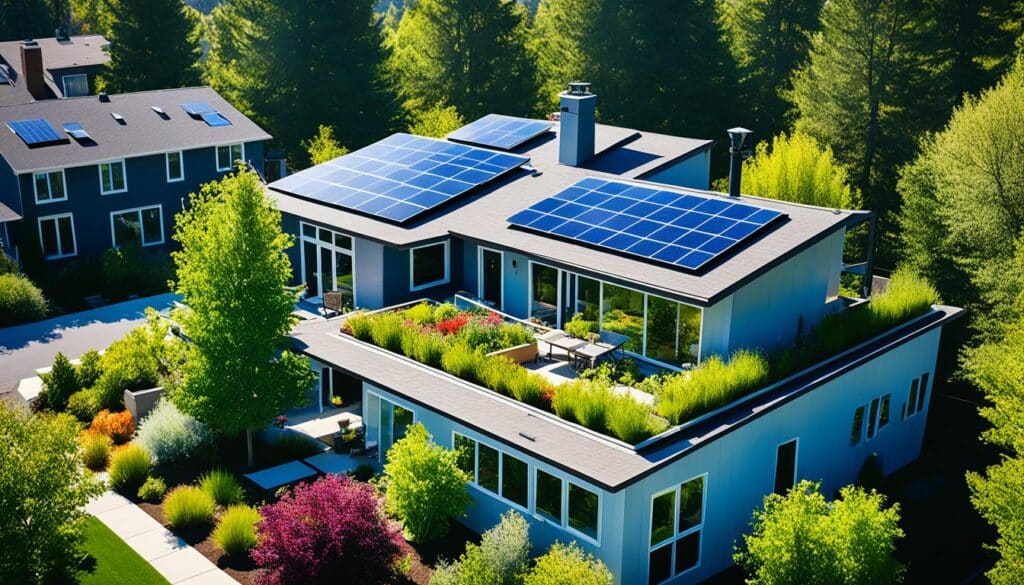
Utility-Scale Solar Power Plants: Generating Clean Energy on a Grand Scale
Utility-scale solar power plants play a crucial role in meeting the growing demand for renewable energy and achieving sustainability goals. These mammoth installations are designed to generate large amounts of clean energy, contributing to the reduction of greenhouse gas emissions and mitigating climate change.
The heart of these power plants lies in the vast arrays of solar panels that stretch across expansive land areas. These panels, often made of photovoltaic cells, harness the power of the sun and convert it into electricity. The scale of these plants allows for efficient and cost-effective large-scale energy production.
By supplying the electrical grid with renewable energy, utility-scale solar power plants not only contribute to reducing reliance on fossil fuels but also enable the integration of clean energy into our everyday lives. This transition paves the way for a more sustainable and eco-friendly future, driving us closer to achieving a carbon-neutral society.
FAQ
What is a PV system?
A PV system, also known as a photovoltaic system, utilizes sunlight to generate clean and renewable energy. It typically consists of photovoltaic modules, an inverter, and a battery storage system.
How do residential rooftop PV systems work?
Residential rooftop PV systems involve the installation of solar panels on rooftops to harness the power of the sun. The solar panels convert sunlight into electricity, which can be used to power household appliances and lighting.
What are the benefits of installing a residential rooftop PV system?
Installing a residential rooftop PV system allows homeowners to generate their own electricity, reducing their reliance on the electrical grid. It also provides a clean and sustainable energy source and can potentially save money on electricity bills.
Do residential rooftop PV systems work on cloudy days?
Yes, residential rooftop PV systems can still generate electricity on cloudy days, although the amount of energy produced may be reduced compared to sunny days.
What is net metering for residential rooftop PV systems?
Net metering is a billing arrangement that allows homeowners with residential rooftop PV systems to receive credits for any excess electricity they generate and feed back into the electrical grid. These credits can then be used to offset future electricity consumption.
How do utility-scale solar power plants function?
Utility-scale solar power plants are designed to generate large amounts of clean energy and supply it to the electrical grid. They consist of vast arrays of solar panels spread across expansive land areas, which convert sunlight into electricity that can be distributed to meet the energy needs of a wide area.
What are the advantages of utility-scale solar power plants?
Utility-scale solar power plants offer significant advantages as they contribute to large-scale energy production, reduce reliance on fossil fuels, and promote sustainability by generating clean and renewable energy. They can also create job opportunities and boost the local economy.
Can utility-scale solar power plants work at night?
Utility-scale solar power plants do not generate electricity at night as they rely on sunlight to produce energy. However, some plants may incorporate energy storage systems, such as batteries, to store excess energy during the day for use during nighttime hours.
How do PV systems contribute to a sustainable future?
PV systems play a crucial role in promoting a sustainable future by harnessing clean and renewable energy sources, reducing greenhouse gas emissions, and mitigating the impacts of climate change. They also help to diversify the energy mix and reduce dependence on fossil fuels.

